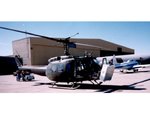Glider
Major
The A6, A7 and A10 all performed well because they were designed from the outset to drop bombs as a primary mission.
And the A6, A10 and A7 could only complete those missions with control of the air, a luxury that the future may not allow for.
The F15 and F18 can operate wherever they like and mix it with the best the opposition can currently field.

